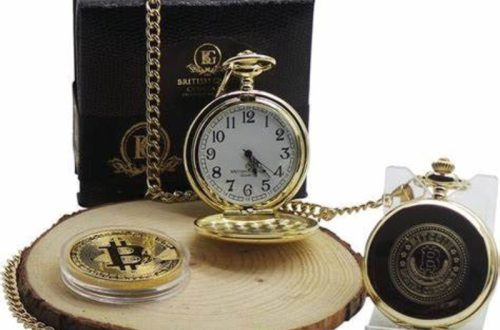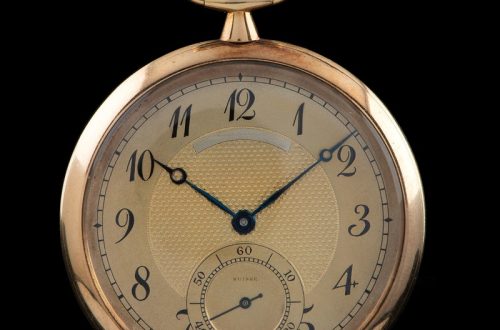Introduction to Mechanical Wind-Up Watches
In the world of timepieces, mechanical wind-up watches stand as timeless classics. These watches, powered by intricate internal mechanisms, do not need batteries. A manual wind watch is hand-wound by the wearer to keep it running. This traditional approach to timekeeping honors centuries-old craftsmanship. Mechanical watches offer precision through a series of gears and springs. To wind one of these watches, you turn the crown, which stores energy in the mainspring. The steady release of this energy powers the movement, which then moves the hands. Mechanical watches stand out for their detailed engineering and elegant design. They often reflect a wearer’s appreciation for history and fine mechanics. In this guide, we’ll explore the charm of mechanical wind-up watches and what makes them special. We’ll also look at affordable options and how to care for these distinctive timepieces.
The Appeal of Hand-Winding Timepieces
The allure of mechanical wind-up watches lies in their engagement and craftsmanship. Unlike their quartz or digital counterparts, hand-winding timepieces require daily interaction. This interaction fosters a connection between the watch and its wearer. It transforms the act of telling time into a ritual.
Owning a mechanical watch often signifies a nod to tradition and mechanical artistry. Collectors and fashion-forward individuals alike find value in these watches. They appreciate the meticulous construction and the visible workings of the gears. These pieces are not just timekeeping instruments but wearable art.
The simplicity of a manual wind watch adds to its charm. It does not depend on batteries or external power sources. Its operation is a testament to centuries of engineering advancements. The gentle winding of the crown is a moment of pause and precision, a daily routine that watch enthusiasts cherish.
Hand-winding watches represent a personal investment in time. They are often heirlooms passed down through generations, carrying stories and history. These timepieces encourage mindfulness and respect for time, as they demand attention and regular care.
In summary, the appeal of mechanical wind-up watches is manifold. They offer a tactile experience, timeless elegance, and an intimate bond that grows with each wind of the crown. For those seeking depth and character in a timepiece, a mechanical wind-up watch is an unmatched choice.
Overview of Manual Wind Watch Mechanisms
The heart of a mechanical wind-up watch lies in its movement. Here we break down the key components and how they work together to keep time.
A manual wind watch consists of several key parts:
- Mainspring: This is the power source. You wind it to store energy. It slowly unwinds to release energy.
- Gears: These transfer energy from the mainspring to the watch hands.
- Escapement: This component manages the energy release from the gears.
- Balance Wheel: This oscillates to regulate the energy release, keeping time consistent.
- Jewels: These are not for decoration; they reduce friction in the movement.
To operate the watch, you turn the crown. This tightens the mainspring, storing energy. As the spring unwinds, the energy moves through the gears. The escapement ensures this happens at a steady pace. The balance wheel uses a spring to oscillate back and forth at a constant rate. This action moves the hands forward, keeping precise time.
Every part must work in harmony. This precision defines the watch’s accuracy. Mechanical movements are prized for this fine engineering. Watchmakers have refined these mechanisms over centuries, creating the reliable manual wind watches we use today.
Understanding these basics helps you appreciate the craftsmanship of a mechanical wind-up watch. Next time you wind your timepiece, remember the intricate dance of components inside, all working to mark each moment of your day.
Key Features to Consider When Choosing a Mechanical Watch
When selecting a mechanical wind-up watch, certain features are critical for making an informed decision. Here are some key factors to keep in mind:
- Movement Quality: The movement’s craftsmanship impacts accuracy and durability. Opt for renowned mechanisms with a proven record.
- Case Material: The outer shell can range from stainless steel to precious metals. Your choice should reflect style preference and durability needs.
- Crystal Type: Protecting the dial, crystals can be acrylic, mineral, or sapphire. Sapphire is the most scratch-resistant.
- Power Reserve: This indicates how long the watch runs post-winding. Consider a watch with a longer power reserve for less frequent winding.
- Water Resistance: Important if you’re near water often. Check the rating for suitability to your lifestyle.
- Complications: Extras like calendars and moon phases add functionality but also complexity and cost.
- Brand Reputation: Established brands often ensure higher quality and better service after purchase.
Balancing these features with personal aesthetics and budget will lead to a satisfying mechanical watch choice. Whether you value the precision of the movement or the style of the case, each aspect contributes to the watch’s overall appeal and performance.
Affordable Options for Mechanical Wind-Up Watches
For those captivated by mechanical wind-up watches but constrained by budget, there are ample affordable options. These timepieces integrate the charm and complexity of traditional watchmaking at a price that doesn’t break the bank. Here are some key points for enthusiasts looking to add to their collection without spending a fortune:
- Seek Heritage Brands: Many established watch companies offer entry-level mechanical watches that benefit from their long-standing experience.
- Look for Simplicity: Watches with basic functions are more affordable than those with multiple complications. A simple, elegant design often means a better price point.
- Consider Size and Materials: Smaller watches with less expensive materials, like stainless steel, can be more cost-effective while still offering durability and style.
- Check for Sales and Discounts: Keep an eye on sales, especially online. Brands may offer significant discounts on older models or during special events.
- Explore Microbrands: Some newer brands produce high-quality mechanical watches at lower prices. They can offer unique designs as well.
- Customer Reviews: Browse reviews and watch forums. Feedback from other owners can guide you to watches that offer great value.
- Pre-owned Market: Don’t overlook pre-owned watches. Many are well-cared-for and come at a fraction of the original price.
With these tips, you’re equipped to discover mechanical wind-up watches that marry affordability and craftsmanship. Embrace the search; the perfect piece that fits both your wrist and wallet may be just around the corner.
Notable Brands and Models in the Manual Watch Market
When venturing into the world of mechanical wind-up watches, brand and model matter. Discerning shoppers look for reliable and stylish timepieces. There are several notable brands offering quality manual watches without the luxury price tag.
- Seiko and Citizen: These Japanese giants deliver robust, affordable watches. Their models blend tradition with innovation, pleasing beginners and collectors.
- Orient: Known for elegance and precision, Orient watches are budget-friendly. The Bambino and Sun & Moon are popular choices.
- Hamilton: With a rich history, Hamilton’s Khaki Field Mechanical is a standout. It offers Swiss precision and military-inspired design.
- Timex: This brand provides entry-level mechanical watches like the Marlin. Its vintage aesthetics are appealing to many.
- Bulova: For classic American design, Bulova’s mechanical watches mix innovation with traditional style.
- Tissot: Their Swiss watches, like the Everytime Swissmatic, offer a taste of luxury at a reasonable price.
- Microbrands: Brands like Zelos and Baltic are carving a niche. They provide unique, high-spec watches at attainable prices.
These brands showcase a range of timepieces that cater to various tastes and budgets. They balance affordability with the craftsmanship enthusiasts desire. Anyone searching for a good mechanical wind-up watch is likely to find a fitting model among these brands.
Maintenance and Care for Longevity of Wind-Up Watches
Caring for mechanical wind-up watches ensures they last for years. These watches need regular maintenance to perform well. Avoid exposing them to water unless they are water-resistant. Keep them away from magnets, which can disrupt their movement. Get professional servicing every 3 to 5 years. Regularly clean the case and crystal with a soft cloth. Wind your watch at the same time daily to maintain accuracy. Store it in a cool, dry place when not in use. Watch out for signs of wear or issues. Address them quickly to prevent damage. By following these tips, your mechanical watch will stay reliable and precise.
The Future of Mechanical Watches in the Modern Era
As technology advances, the place of mechanical wind-up watches evolves. Yet, even in this digital age, the demand for mechanical watches remains strong. Their enduring appeal lies in their history, craftsmanship, and the tactile experience they offer. Here are trends shaping their future:
- Sustainability: Manual watches are powered by winding, not batteries. This makes them eco-friendly, appealing to environmentally conscious consumers.
- Technology Integration: Some mechanical watches now include smart features. Yet, they keep their classic mechanisms. This blend attracts tech-savvy buyers valuing tradition.
- Customization: Watch enthusiasts seek unique pieces. Brands offer personalized options, from engravings to bespoke designs.
- Heritage Reissues: Watchmakers re-release vintage models. These often sell out fast, showing the deep connection fans have with past designs.
- Collaborations: Brands partner with artists and designers. This results in limited-edition watches that are modern yet retain mechanical roots.
- Education: As people learn about mechanical movements, they appreciate them more. Watch brands invest in education to boost interest and understanding.
- Online Communities: Social media and forums unite watch lovers. They share knowledge, reviews, and foster a sense of community around mechanical watches.
Mechanical wind-up watches hold a unique place in the modern era. They bring together history, personal expression, and an appreciation for engineering. With a passionate community and an eye on the future, these timepieces continue to stand the test of time.





